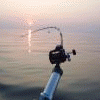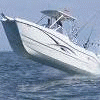

HONDAM
Members-
Posts
158 -
Joined
-
Last visited
HONDAM's Achievements
10
Reputation
-
Did you connect the Out of the Lowrance to the In on the autopilot? Colors usually do not match up.
-

What Graph to get to use with an Auto Pilot
HONDAM replied to mali0056's topic in Marine Electronics
Unless you have hydraulic steering that autopilot will not work. The cable one is more money Even if you do have hydraulic the Lowrance kit supplies the smallest pump ive ever seen on an autopilot. It is about half the size of a typical autopilot pump, a small pump limits its performance in making coarse changes. That compounded with the relatively low quality sensors they have to use to keep the price down and the high demand on the autopilot for trolling I don't believe it will be your best option. This autopilot will probably work fine on cruisers but I am doubtful of its trolling ability. A Simrad system or even a Garmin system will network with your Lowrance id probably examine more options before making a decision. Most modern autopilots will network with almost any current GPS, anything with NMEA. -
All nmea wires should be stranded tinned wires so you should find the same with your autopilot connection as well. The Scotchloks were originally designed for telephone wire which is solid but it will also work well on stranded wire. Garmin actually provides them with their units to make such connections. Both the red 3 wire connectors and the Yellow 2 wire connectors will work.
-
NMEA 0183 comm cable must be a twisted pair 22AWG wire with at least 95 percent shielding. NMEA 0183 wire is usually a 6 conductor wire with one of them being a bare shield which allows for 2 comm channels and a common ground. In a pinch if you cant find any Ethernet wire will work, its just one size small but it will work as a temporary solution. Barrier strips are the approved method of termination but ive used Scotch Lock connectors in the past and even though they are not approved by NMEA personally believe they are just as good.
-
There is only one manufacturer of drive units left, that is Octopus Drives out of BC Canada. Fortunately Octopus Drives works with many different manufactures to provide affordable autopilot packages as well as universal compatibility to build your own autopilot. One limitation of the octopus drive is it requires a minimum 8.5in clearance behind the helm, if you do not have this your must either make accommodations to get it or switch to hydraulic steering. One of the best value autopilots is offered by another Canadian company, Comnav. They have been in business since 1982 making commercial, government, and recreational systems for all sizes of vessels. These autopilots are known for being bare bones functional and reliable at an affordable price. The 1420 model offers everything you need in one box; Drive unit, Computer, Compass, and rudder sensor all included at a price of under $1800. This autopilot I would recommend to anyone looking for the best value for your dollar or as an affordable first autopilot. It is very easy to use and simple to install. Its controller does not have a display but it will network with a NMEA 0183 GPS and display on the GPS screen. The next option is the Simrad AP-24R. This is the next generation of the popular AP-14R with some improvements, better controller and the virtual rudder sensor. They used to make the rudder sensor into the drive unit but now that they don't include a physical rudder sensor you must add one to get proper performance while trolling. This drive the cost up over $2000. This autopilot I would recommend as an upgrade over the Comnav, it has a digital display will pair well with a Lowrance or Simrad. Both those autopilot use a simple Fluxgate Compass. You can achieve better autopilot performance by using an autopilot that has better sensors. To do this you will have to build your own. If you buy the octopus drive with their rudder sensor and pair it with an autopilot like the Garmin Reactor that has a 9 axis solid state altitude heading reference system. This system will run you closer to $2700 and if you fishing in a wide variety of conditions that would be more demanding on an autopilot may be worth the extra money.
-
You don't need a 3 bank although I would recommend one. The bank with 2 battery's will take twice as long to charge as the bank with one battery with a 2 bank charger. With a 3 bank charger they will all be charged at the same rate.
-

WArning light on bilge pump
HONDAM replied to milburnschmidt's topic in Boat Maintenance and Rigging
It's usually pretty easy depending on the pump. Just install a switch that lights up when it's on in place of the old manual override switch and when the pump kicks on automatic it usually feeds juice back to the switch so even though the switch on the dash is off it will still light up. But that all depends on the setup of the pump it works 95% of the time. -
Go to gemeco website and download their catalog. They have more of the hard to find marine electronic plugs that anyone. The are a wholesaler so if its in their catalog you will need to find one of their dealers to buy from.
-
The Garmin gmr18hd is an excellent unit and have used one for a few years. Raymarine radar is also pretty good The only ones I know to stay away from are the lowrance/simrad 3G, 4g may be ok just not the 3G also stay away from anything under 4kw unless it's a furuno.
-

I sold my boat today and now looking for a new one
HONDAM replied to sslopok's topic in General Discussion
Have you considered a HewesCraft? You can have a brand new one rigged with hardtop, tracks, electronics, and a Honda or Yamaha 4 stroke in the low $40s. -
I found some very reasonable sources online for battery cable and I would definately use tinned cable. Corrosion can really sneak up on you on a boat sometimes it will start causing probablems before you can even see it. Its very important to use at least a 1000mca or 800cca on most outboard especially 4cyl and larger and to properly terminate your connections. Just bolting the cables together will work but is definately not the right way to do it. It can cause reliability issues and possible cause a fire if done that way. Power posts or distribution blocks should be used.
-

Vacuum Advanc or No Vacuum Advance?
HONDAM replied to Eyefull's topic in Boat Maintenance and Rigging
Marine engines do not cruise like cars, there is always much more load on a marine engine than a car and the vacuum levels are not the same making it very hard to tune. It's not impossible though and it may be easier on some boats then others but IMO not worth the hassle or expense. All marine engines for as long as I can remember have mechanical advances. You would be very hard pressed to find a marine vacuum distributor. I would caution you against putting car parts on the boat. They are not built to the same safety requirements and specifications as marine parts and could cause you to be stranded or even worse a fire or explosion. -
The Garmin with the maps pre-programmed in and the CHIRP transducer is just over $900 on our online store where the dragonfly is about $650 with the maps. I believe the power cable has the NMEA wires included in the pigtail. So nothing would be needed just connect the wires.
-
From what I have heard the sonar has been excellent and people have been relatively happy with the unit. Although the GPS is basic and it has absolutely no com ports if you need to network it with your VHF or another unit, I don't even think you can add an external antenna. If your looking for a combo unit the Garmin 547xs would be a much better CHIRP combo with the best GPS but cost a little more. You can actually network your DS-400 with the Garmin but not the Raymarine Dragonfly.
-
The reason to spend $500 is to get away from the discontinued equipment, im not positive on that price either may be more or less. They most likely will send you a refurb LRA-2400 under warranty and that would be free of charge. And they will send you an upgraded one for free BUT only when there are no more LRA-2400s to be had. They have a very specific program in place to handle situations like this on what they replace warrantied units with and how much they charge for upgrades. For them just to give you a 4G radar because of all your issues is going to be unlikely and would need special approval since it doesn't follow their standard warranty procedures. I certainly understand 100% not wanting to put any more money in it. It basically comes down to how but faith your going to put in your Lowrance. IF you have absolutely confidence in them providing you with a quality radar and the first 2 were just flukes then stick with the LRA-2400, if you still have confidence in your Lowrance to be able navigate effectively but want a little insurance then spend the money to upgrade, although if your not sure if your Lowrance will last 1 day or 5 years then id get rid of the whole package because it is an important safety item for the type of water we navigate on here in the great lakes and with any safety item its only as good as its reliability, needs to work every time you ask it to or its no good.


